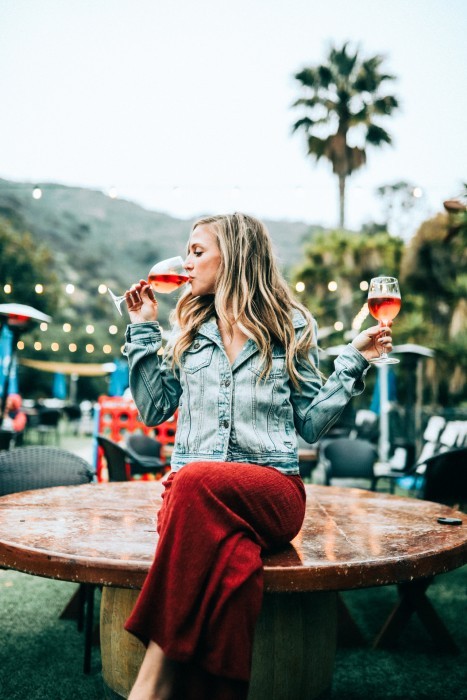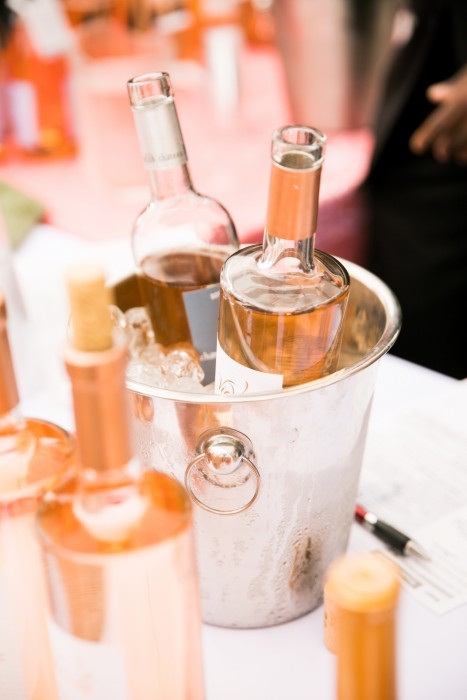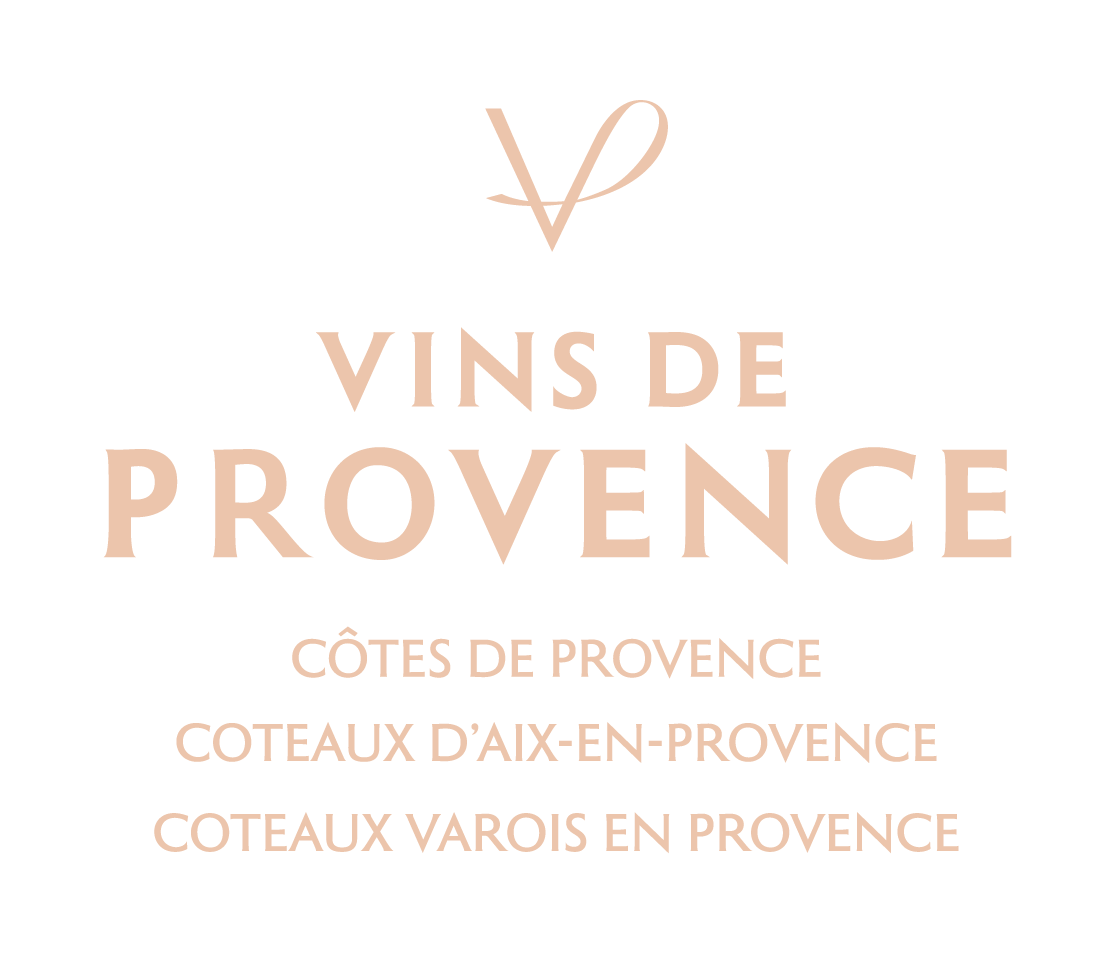Provence Rosés in the Spectrum of Global Rosés
How Can Provence Remain Competitive and Continue to Lead Consumer Preferences
The rising tide of Provence has floated all boats, even those that aren’t yachts moored in the St. Tropez mecca of rosé. Today, one in ten bottles of wine sold is rosé and three in ten bottles of rosé sold are French. Between now and 2035, production and consumption of rose wines are projected to increase to 25 million hectoliters by certain sources (CIVP, sources “Rosé Wines World Tracking”, IWSR, Wine intelligence).
The initial and soaring popularity of rosé is no doubt linked to the lifestyles of Provence and the Côte d’Azur. However, as rosé continues to become a more regular part of wine drinkers’ diets, how can Provence maintain its stature? Twenty years ago, the only white to drink was Chardonnay and the only reds were Cabernet Sauvignon and Merlot. That is hardly the case today. It is important to note that pink isn’t just for wine anymore, too. There’s pink cider, pink Pastis, pink beer and even pink gin! Today, six countries account for 70% of the world’s rosé wine consumption, but change is always on the horizon.
Living and sharing rosé "moments"
One of the most important ways of participating in the evolution is being available where consumers most want to drink rosé wines. Whether that is in being part of large distribution chains to sit on grocery stores shelves, selling direct to consumers so that their fridges are always stocked or participating in the groundswell of rosé events like Pinknic and La Nuit en Rosé or the Rosé Mansion in New York City, being visibly in the mix is likely critical for most main stream producers.
No brand can be everywhere, however, except on social media channels. Rosé wine is noticeably present on social media and not just amongst wine Twitterati. From its enticing color to its often unique and gracefully shaped bottles to its popular large formats, Provence rosés have an eye-catching quality that gives them good bandwidth - and an edge - on Instagram and Facebook, too.
All of these rosé “moments” are part of wine lovers harnessing the chance to “own” a part of the rosé lifestyle. This began with the luxe ways of the French Rivera, but today they are evolving to encompass other ideas of what is “luxury”. This varies widely based on lifestyle and age group. This is encouraging as the more people embrace the rosé way, the more the many iterations of rosé will be accepted. In the US, consumers have moved past the idea that pink wine is as sweet as cotton candy. As those same imbibers continue to explore rosé, their interests easily could extend beyond the classic Provence rosé style of pale, relatively lower alcohol juice.

The Provence rosé style
It will be easier for other wine regions with a less historic stylistic definition to morph into newer rosé styles. However, this should not be perceived as threat to Provence rosés. This is because some styles are as timeless as they are iconic, and the rosés of Provence arguably fit into that category. Like Coco Chanel, Louis Vuitton, Claude Monet, Jacques Pépin and Édith Piaf, Provence rosés have no need to change their style.
However, in order to remain competitive and to continue to lead at the pinnacle of rosé wine quality, the rosé wines of Provence must press (winemaking pun intended) into the future. Quality cannot be compromised in order for the image of Provence wines to remain in the top echelons. This is especially true given the generally higher prices that Provence rosés command.
Inevitably, climate change will work to affect the Provence rosé style, so it is critical that the local research underway on vinegrowing, grape varieties (including the revival of old ones and experiments with new ones, such as Caladoc, Rousseli and Castets) and vinification techniques continue with vigor. The two principle factors that Provence rosé must fight to preserve are its terroir-led characteristics and its iconic color:
-
Provence rosé is classically terroir-driven, via a combination of its local grape varieties tied to its historical terroirs. However, most rosé made elsewhere is winemaker-driven. Even if there are ancient varieties tied to vineyards, the astonishing number of possibilities for rosé winemaking (pressed, saignée, varietal, blended, fermented dry, fermented just short of dryness, sweetened post-fermentation, with or without malolactic fermentation, with or without lees contact or lees stirring, made or aged in inert vessels ranging from stainless steel to concrete eggs to epoxy-lined vats or barrels of every possible size and age) mean that global rosés styles vary from unpredictable to surprising. In contrast, Provence guarantees its rosé wine experience in that its wines are made from vines grown specifically for rosé production in a dry, light and charming style.
-
Pink isn’t always pink anymore. That’s to say that certain countries prefer a paler pink than France (Japan likes an early cherry blossom color that is more yellow than pink, for example) while others want bolder pinks (Spain comes to mind) that may verge towards pale red (Italy’s Cerasuolo styles.) Then, there are skin-contact styles of rosés that turn out wines that are orange rather than pink. As the consumer idea of pink evolves, Provence should stay on-course to maintain its classic style.

Extending consumption all year long
Moreover - and perhaps even more importantly, Provence rosé producers - even more than those that sell the wines elsewhere - will need to coax the consumer mindset to think beyond summer consumption. Happily, consumers - especially younger consumers and those of the Millennial generation in the US - are more adventurous today and are less inclined to adhere strictly to the patterns of earlier generations. Additionally, younger consumers do not suffer from having known the White Zinfandel stigma of the 1970s, 80s and 90s in the US. In fact, certain Californian producers, like the iconic Turley, have begun making dry “White Zinfandel” as rosé’s popularity has soared recently.
This effort to extend consumption should include an array of approaches, including non-summer activities, alternative packaging and an expanded rosé style spectrum. For example:
-
Rosé is already considered a wine well-suited to activities, thanks in good part to its thirst-quenching qualities. Encouraging rosé enjoyment in conjunction with non-summer sports, especially those considered to be “luxury, leisure sports” like skiing and cycling, should be a logical follow-on for consumers who already appreciate rosé in warmer months. “Rosé for après?” could well be the next catch phrase applied to après-ski!
-
While the eye-catching and distinctive bottles - especially the large formats - of Provence are perfect at a pool-side table, they can be less convenient for today’s lifestyle consumption of wine. Alternative packaging allows consumers to enjoy wine in different places and at different times. Single serve cans are great weight-wise for outdoor activities, like trekking and camping, among others. Bag-in-box packaging may allow consumers to enjoy Provence rosé at a lower cost over a longer period of time. Moreover, both of these lighter packaging styles may allow (export, especially) consumers to enjoy Provence rosés with the added benefit of knowing they’ve been more considerate of the environment.
-
The vast majority of Provence rosé is a natural hit with the lighter dishes of summer. Yet certain rosés wear their Provencal provenance with a twist. These are gastronomic rosés and patinaed rosés (or, rosés patinés, those with a bit of beneficial age on them). These are rosés that have been endowed with additional layers of complexity through barrel fermentation and/or aging or simply bottle aging. Barrel aged or barrel fermented rosés often show smoky or toasty tones along with having developed a broader and smoother palate texture. Patinaed rosés are bottled aged rosés (and may or may not have seen oak barrel influence) that have moved from their original, primary aromas of fresh fruits and floral tones to more developed, secondary notes of dried fruits and herbs as well as possible tones of earth, tobacco leaf and mushrooms. “Patinaed” rosés also tend to have a rounder and more mellow palate. The additional complexity and different mouthfeel of these two wine styles compliments a more evolved and often richer cuisine style that tends to be preferred in cooler to cold months.
Though the enthusiasm burns bright for summertime rosé, that’s not only way for rosé. Though the French tend to be modest about selling wine, it is the producers more than any others that can most effectively convince the consumers as to how best to enjoy their wines.
Within the global spectrum of rosés, Provence has achieved great success through a clearly established style. As the saying goes, it’s a long way down from the top. However, Provence and rosé wine lovers have only just begun to explore the possibilities of this newly embraced wine style. As Provence Wines work to maintain and improve its well-established high standards while battling climate change, the regions winemakers have plenty of room to expand the perceptions of trade and consumers alike as to how to enjoy the wines.
